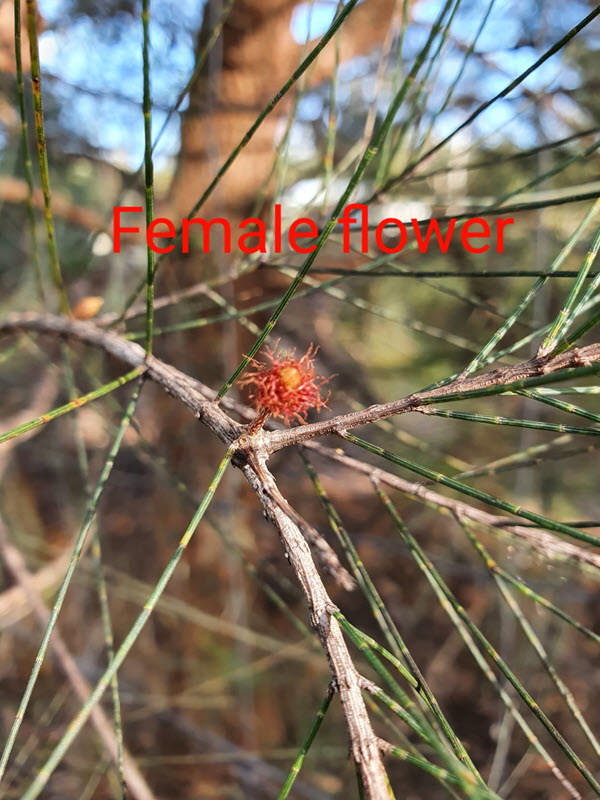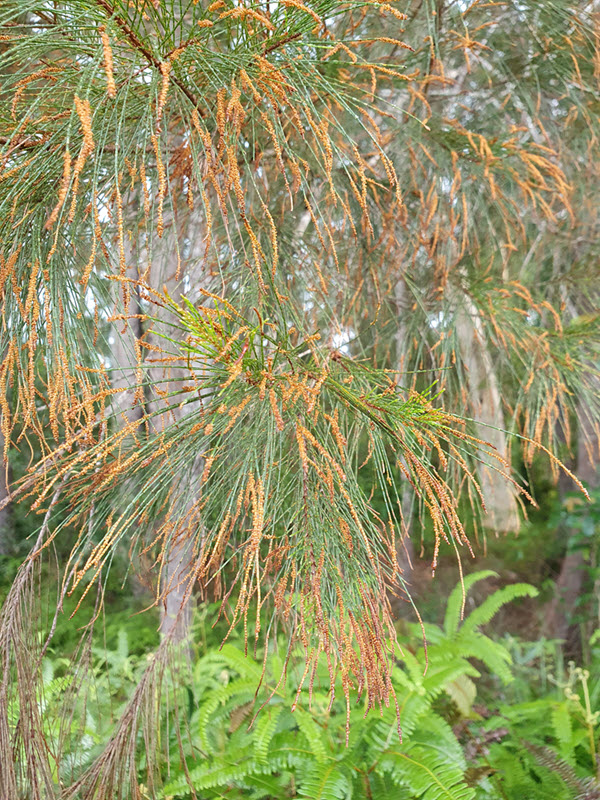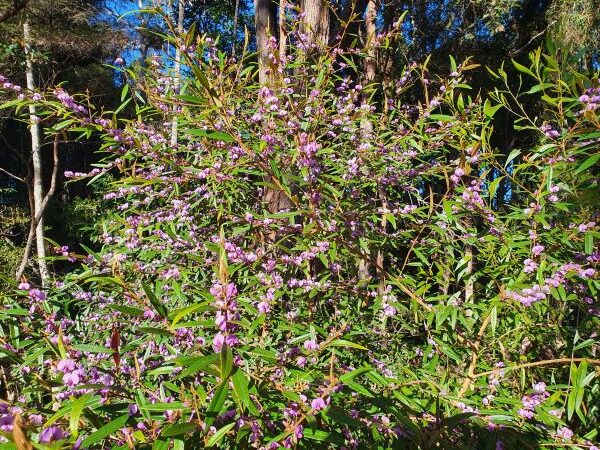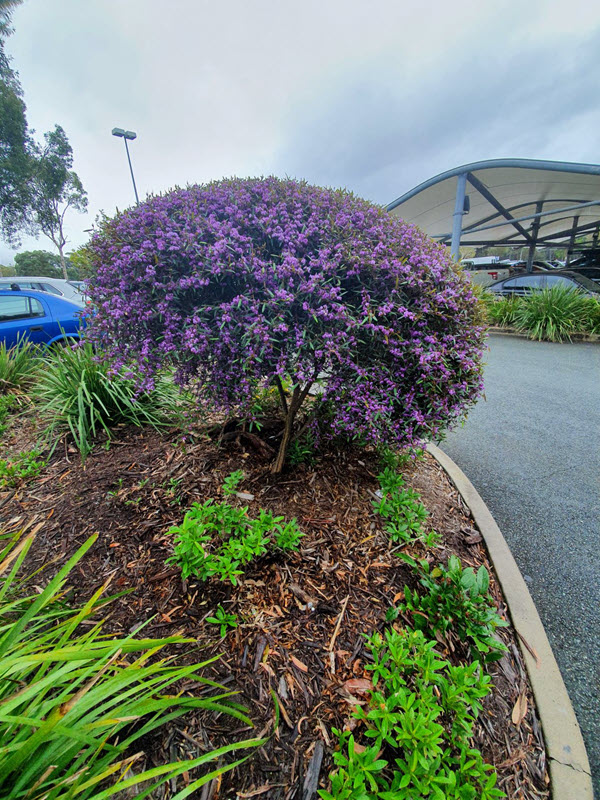Last year in this article was relevant in September, but this year these flowers will be gone by springtime. Many native animals are also displaying springtime behaviour and it will be interesting to see the effects of this seasonal change in the long term.
Driving along Noosa shire roads at this time of year is amazing. The colour on the edges of the bush from local plants is varied and beautiful.
The purple is Hovea acutifolia (common name Hovea). It can also have a white flower but I haven’t seen this version on the side of the road. This plant grows well in gardens – plants that can survive in a car park can do well anywhere. Hoveas can start off a bit spindly but will flower when small and are very hardy although they don’t tolerate salt. They can be pruned into a nice shape and can reach over two meters in height but are usually smaller if left to grow naturally.
You will also notice many species of Acacia (wattles) growing along Noosa roadsides. In the last few weeks Acacia hubbardiana (Prickly Moses) has been putting on a show, especially along Emu Mountain Road. Their flowers were a brilliant yellow but are now fading to a cream colour. Much like Hovea, Prickly Moses can be a bit spindly. Due to their spikey phyllodes (leaves) they make great small bird habitat so are best planted close together. They can grow to 2 metres in height but are usually smaller.
The gold or brown colour is from Allocasuarina (She-oaks) flowers, specifically on the male trees. Female trees have small pinkish red flowers that aren’t showy. It’s possible to see the pollen leave the flowers when the tree is shaken. Species of Allocasuarinas are found throughout the Noosa shire and are an important food source for Cookatoos. Be aware when planting them in a garden that these trees can grow up to 10 metres.
Coolum Native Nursery and Hinterhub Pomona both stock the species listed here.
Michelle Newall







